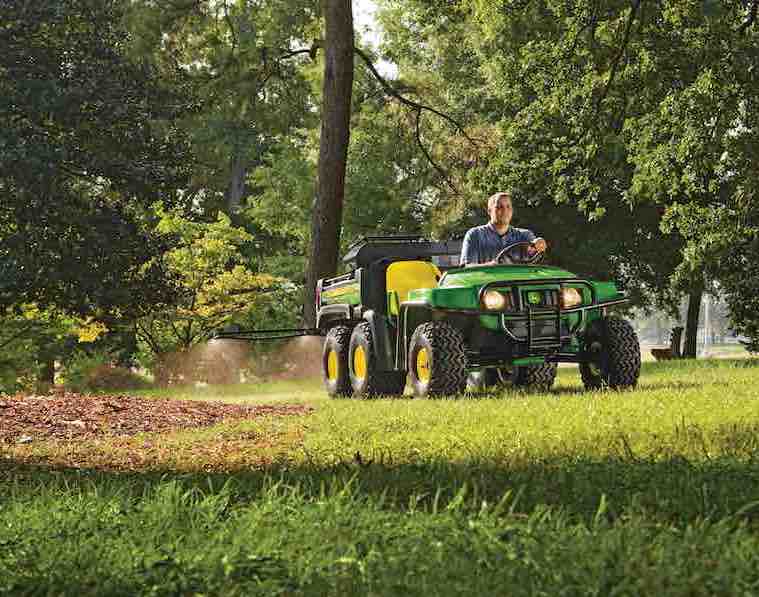UTV Trends

We recently asked several leading UTV manufacturers about UTV trends, as well as advice for finding a UTV that best suits your needs.
According to Amy Vincent, product application specialist at Caterpillar, UTVs have clearly moved from being just a recreational vehicle to a work-centric product – often replacing pickup trucks for use in various markets.
“UTVs combine the benefits of ATVs and pickup trucks into one easy-to-maneuver vehicle, merging the load-hauling and towing capabilities you want with the lightweight off-road vehicle you need,” said Vincent.
Vincent added that UTVs now combine durability, stability, quiet operation, comfort, and maintenance simplicity.
“To ensure maximum durability, manufacturers have focused on developing UTVs that are designed to withstand the toughest of conditions, minimizing downtime,” said Brooks Hastings, product manager, John Deere. “Versatility is also important with UTVs, as every customer has very different needs. Manufacturers have expanded their offerings to provide a full line of vehicles with a variety of terrain, cargo and passenger capabilities.”
Hastings added that comfort continues to be a top priority with UTVs, and manufacturers have met this need by introducing a variety of new features designed to boost comfort, including cabs with air conditioning and heat.
“As the multipurpose utility vehicle market grows, the demand for work-capable utility machines will grow in this segment,” said Chris Box, Kubota product marketing director. Durability and speed will be a consumer demand, Box added.
“The trend that jumps out to me is the continued advancement of electric power in vehicles,” said Andrew Ihrke, product marketing associate, Toro commercial division. “Many customers are finding long-term savings and meeting new green initiatives as battery-powered technology advances and allows them to get the same jobs done that they used to get done while using gas. While it does not cover all classes of utility vehicles, it continues to drive progress and innovation. We also see a lot of specialization, as different vehicles are available to meet the needs of all areas of a job.”
When it comes to selecting the UTV that’s right for you, Ihrke recommends finding the right size vehicle for the job you’re looking to accomplish.
“With so many different jobs, one size will not fit all within a fleet,” he said. “Understanding the features each product offers will help tailor the perfect fleet for any stadium/sports complex/park.”
Box added thatprice point is often the first thought when considering a new machine.
“It is important to remember ease of maintenance, operating cost, operator comfort, and standard features all go into the overall cost consideration,” said Box. “Whether it is spraying, towing a trailer, or transporting equipment and people, you need a machine that can do it all without being a headache to the user or a strain on your budget. Also, consider parts availability and the brand’s dealer network to ensure that you are provided quality service in a timely manner.”
According toVincent, it is important to consider are how fast do you need to go, what type of fuel you have easily accessible, and how many passengers you need to carry.
Vincent added that it is important to consider load-hauling capabilities, stability and ease of maintenance.
“UTVs are often used to haul substantial loads on large properties, such as 1,000-pound spray rigs,” she said. “Therefore, you want to select a utility vehicle with enough rear cargo and/or towing capacity to handle the tasks at hand.”
In terms of stability, Vincent said it is important to pick a UTV with a suspension system that provides stable and smooth transport or any terrain, whether you’re hauling a full load or not.
“When it comes time to service your equipment, it needs to be quick and simple,” Vincent added. “Some UTVs on the market today were purposely designed with this in mind, providing easy access to service points so you can perform necessary maintenance even when you’re out in the field.”
Hastings said it is important for users to determine their needs and how they will use a UTV.
“Think about key factors such as the power source, how much you plan to haul, type of terrain, machine speed, number of passengers and the jobs you intend to complete,” said Hastings. “By determining these needs, you’ll be able to narrow down your options to find the machine for you.”
This article originally appeared in SportsField Management magazine, sister publication to Landscape Business, and was written by John Kmitta, associate publisher/editorial brand director.


